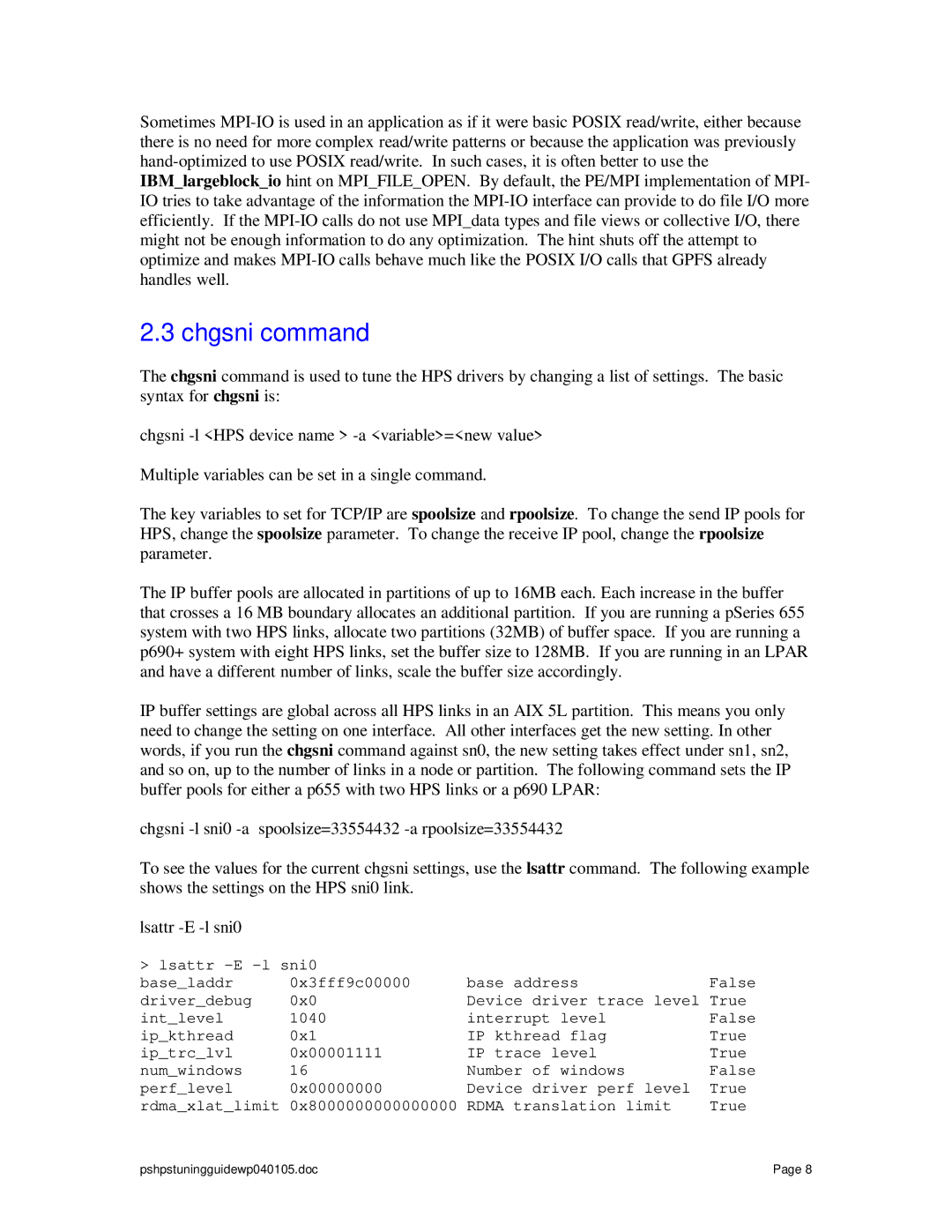Sometimes
2.3 chgsni command
The chgsni command is used to tune the HPS drivers by changing a list of settings. The basic syntax for chgsni is:
chgsni
Multiple variables can be set in a single command.
The key variables to set for TCP/IP are spoolsize and rpoolsize. To change the send IP pools for HPS, change the spoolsize parameter. To change the receive IP pool, change the rpoolsize parameter.
The IP buffer pools are allocated in partitions of up to 16MB each. Each increase in the buffer that crosses a 16 MB boundary allocates an additional partition. If you are running a pSeries 655 system with two HPS links, allocate two partitions (32MB) of buffer space. If you are running a p690+ system with eight HPS links, set the buffer size to 128MB. If you are running in an LPAR and have a different number of links, scale the buffer size accordingly.
IP buffer settings are global across all HPS links in an AIX 5L partition. This means you only need to change the setting on one interface. All other interfaces get the new setting. In other words, if you run the chgsni command against sn0, the new setting takes effect under sn1, sn2, and so on, up to the number of links in a node or partition. The following command sets the IP buffer pools for either a p655 with two HPS links or a p690 LPAR:
chgsni
To see the values for the current chgsni settings, use the lsattr command. The following example shows the settings on the HPS sni0 link.
lsattr
> lsattr |
|
| |
base_laddr | 0x3fff9c00000 | base address | False |
driver_debug | 0x0 | Device driver trace level | True |
int_level | 1040 | interrupt level | False |
ip_kthread | 0x1 | IP kthread flag | True |
ip_trc_lvl | 0x00001111 | IP trace level | True |
num_windows | 16 | Number of windows | False |
perf_level | 0x00000000 | Device driver perf level | True |
rdma_xlat_limit | 0x8000000000000000 | RDMA translation limit | True |
pshpstuningguidewp040105.doc | Page 8 |
